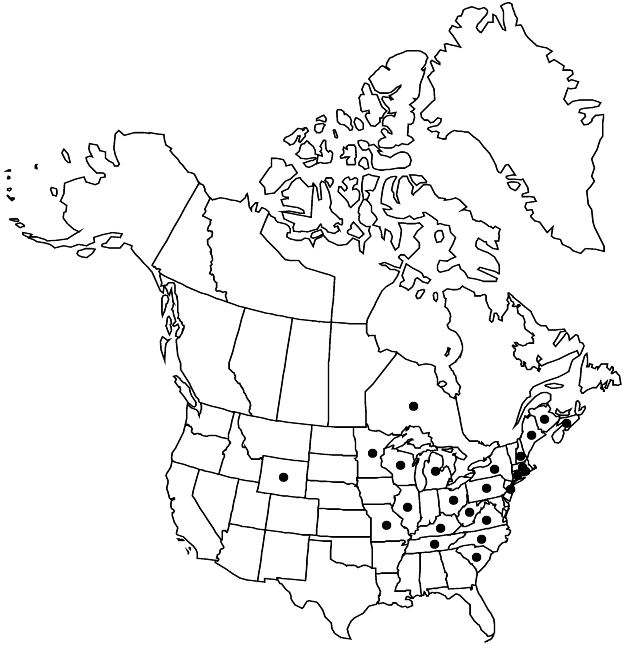Malus baccata
Theor. Prakt. Handb. Forstbot. 2: 1280. 1803.
Trees, 100–140 dm. Stems to 30 cm diam.; bark dark gray with platelike scales; young branches reddish orange and glabrous, becoming reddish brown; flowering shoots becoming spurs, 3–10(–25) mm. Buds reddish brown, ovoid, 3–4 mm, scale margins tomentose. Leaves convolute in bud; isomorphic; stipules deciduous or persistent on vigorous shoot leaves, lanceolate, sometimes filiform, 3 mm, apex acuminate; petiole 20–50 mm, glabrous; blade elliptic or ovate, 3–8 × 2–3.5 cm, base cuneate or rounded, margins unlobed, serrate, apex long-acuminate, sometimes caudate, surfaces glabrous or slightly puberulent when young. Panicles umbel-like; peduncles absent; bracteoles absent. Pedicels 15–40 mm, glabrous. Flowers not fragrant, 30–35 mm diam.; hypanthium constricted distal to ovaries, glabrous; sepals lanceolate, 5–7 mm, longer than tube, apex acuminate, abaxial surface glabrous, adaxial tomentose; petals white, obovate, 20–30 mm, claws 1–2 mm, margins entire, apex obtuse rounded; stamens 15–20, 7–9 mm, anthers yellow before dehiscence; styles (4 or)5, basally connate to 1/2 length, 8–10 mm, longer than stamens, densely villous basally. Pomes yellow to red, subglobose, 8–10 mm diam., cores enclosed at apex; sepals deciduous; sclereids sparse surrounding core. Seeds light reddish brown. 2n = 34.
Phenology: Flowering Apr–Jun; fruiting Sep–Oct.
Habitat: Roadsides, pastures, mixed woods, thickets
Elevation: 0–1500 m
Distribution

Introduced; N.B., N.S., Ont., Conn., Ill., Ky., Maine, Mass., Mich., Minn., Mo., N.H., N.J., N.Y., N.C., Ohio, Pa., R.I., S.C., Tenn., Va., W.Va., Wis., Wyo., Asia, introduced also in Europe.
Discussion
Malus baccata is grown ornamentally for flowers and fruit (red or yellow) and occasionally escapes from cultivation. The species is used as a rootstock for grafting other apple cultivars and is a possible genetic source of disease resistance and cold hardiness. The species is possibly naturalized in Honduras.
Selected References
None.